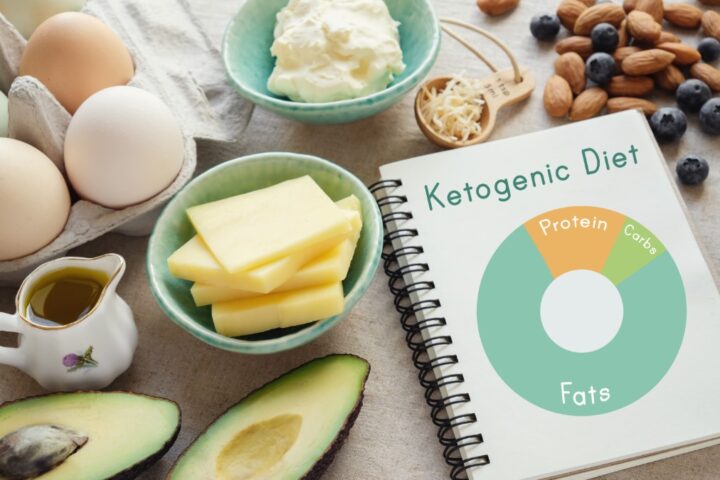The keto diet has helped countless people gain control over cravings, improve energy levels, stabilize blood sugar, and lose weight they once thought impossible to shed. But while keto has clear benefits, it also brings challenges many people do not see coming until they are weeks or months in. One of the biggest hidden issues with staying on keto long-term is magnesium depletion.
Magnesium is one of the most important minerals in your body, needed for hundreds of processes, including muscle relaxation, nerve function, heart rhythm, and energy production. When your magnesium runs low, you may experience cramps, fatigue, restless sleep, or heart palpitations. For people on long-term keto, not managing magnesium can quietly drain your energy and make the diet feel harder than it needs to be.
The good news is that with awareness and a few practical changes, you can protect your magnesium levels, keep your body functioning well, and make keto a sustainable lifestyle, not just a short-term fix.
Why Does Keto Lower Magnesium Levels?
When you switch to a keto diet, your body moves from burning carbohydrates to using fat as its primary fuel. This transition involves burning through your glycogen stores, which also releases water. This is why many people see a quick drop in weight in the first week of keto, it’s water weight tied to glycogen stores.
But with this water loss comes electrolyte loss, including sodium, potassium, and magnesium. Your kidneys flush out these minerals, and unless you actively replace them, your body can run low.
Keto also limits many magnesium-rich foods like fruits, beans, and certain whole grains. Over time, the combination of increased magnesium loss and lower intake can leave you depleted, even if you are eating enough calories and feel good otherwise.

Why Magnesium Matters for Your Keto Journey
Magnesium affects so many areas of health that even mild deficiencies can show up in surprising ways. You might notice your legs cramping at night, your eyelids twitching, or a feeling of constant tension in your body. You may struggle to fall asleep or wake up feeling unrested despite sleeping for eight hours. Some people notice heart palpitations, increased anxiety, or a slump in energy that makes workouts and daily tasks feel harder.
These issues are not just discomforts; they can affect your motivation and ability to stick with keto long-term. By addressing magnesium needs early, you can prevent these problems from undermining your progress.
Recognizing Signs of Magnesium Deficiency on Keto
Because magnesium plays a role in so many bodily functions, deficiencies can appear in different ways. Here are common signs to watch for:
| Potential Sign | Description |
| Muscle cramps | Especially in calves or feet, often at night |
| Fatigue | Feeling tired despite good sleep and food intake |
| Restless sleep | Trouble falling asleep or waking up often |
| Headaches | New or more frequent headaches |
| Irregular heartbeat | Palpitations or fluttering sensations |
| Mood changes | Feeling irritable, anxious, or low |
If you notice these while following keto, magnesium depletion could be part of the cause.
How Much Magnesium Do You Need on Keto?
The recommended intake for adults ranges from 310 to 420 mg daily, depending on age and sex. However, people on keto often benefit from being on the higher end of this range because of increased urinary excretion and lower intake from restricted foods.
Because magnesium absorption can vary, it is best to spread intake throughout the day rather than taking a large dose at once. This not only improves absorption but also reduces the risk of digestive discomfort, which some people experience with high single doses.

Best Keto-Friendly Sources of Magnesium
You do not have to abandon keto to get more magnesium into your routine. Several keto-friendly foods are naturally rich in magnesium and can be incorporated into meals and snacks to support your levels.
Some of the best options include:
- Pumpkin seeds: High in magnesium, easy to sprinkle on salads or eat as a snack
- Spinach and Swiss chard: Excellent in omelets or sautéed with olive oil
- Avocados: Provide healthy fats and magnesium
- Almonds and cashews: Watch portion sizes due to carbs, but a small handful can help
- Dark chocolate: Choose 85 percent or higher for lower carbs and higher magnesium
- Fatty fish like salmon and mackerel: Provide magnesium and essential omega-3s
In addition to whole foods, many keto followers find that magnesium supplements are helpful for maintaining optimal levels, especially if they are physically active or sweat often, increasing magnesium loss.
Choosing Magnesium Supplements on Keto
If you are unable to meet your needs through food alone, adding a magnesium supplement can help. Not all forms of magnesium are the same. Magnesium oxide is commonly sold but has low absorption and can cause digestive upset. Instead, look for:
- Magnesium glycinate: Gentle on the stomach, good for relaxation and sleep
- Magnesium citrate: Better absorbed than oxide, can support digestion
- Magnesium malate: Supports energy production and muscle function
Start with a moderate dose, around 100-200 mg per day, and adjust based on your needs and tolerance. It is wise to discuss supplementation with your healthcare provider, especially if you are taking medications or have existing health concerns.

Practical Steps to Prevent Magnesium Depletion on Keto
The best approach to preventing magnesium depletion is consistency rather than occasional fixes. Here is how you can support your magnesium levels while staying keto:
- Plan meals to include magnesium-rich foods daily, such as leafy greens, seeds, and avocados.
- Stay hydrated and add electrolytes if you exercise or sweat heavily.
- Track your intake periodically using a nutrition app to ensure you are consistently hitting your magnesium targets.
- Supplement if needed with well-absorbed forms, splitting doses morning and evening for better absorption.
- Monitor your body’s signals, adjusting intake if you notice signs of cramps, fatigue, or trouble sleeping.
Using Tech to Track Your Nutrients
Many keto followers use apps and AI-based trackers to monitor macros and electrolytes. If you generate summaries of your health logs with AI tools, it is important to keep clear records of which data came from your notes and which was generated by software for accurate tracking. If you want to verify portions of your logs for transparency, you can use an AI detector to clarify what was AI-generated, especially if you share records with a coach or healthcare provider for collaborative health management.

Final Thoughts ─ Protect Your Health for Long-Term Keto Success
Magnesium is often overlooked but is a cornerstone of successful long-term keto. By paying attention to magnesium needs, you can avoid unnecessary challenges like cramps, fatigue, and poor sleep, which can derail your motivation and wellness goals.
Keto can be a sustainable, energizing lifestyle when managed with care. Adding magnesium-rich foods, supplementing if necessary, and monitoring your body’s signals will help you maintain your energy, support recovery, and protect your health while staying in ketosis.
Taking these practical steps now will pay off in the form of better workouts, deeper sleep, and a smoother, more enjoyable keto experience, allowing you to focus on thriving, not just surviving, on your journey toward better health.
